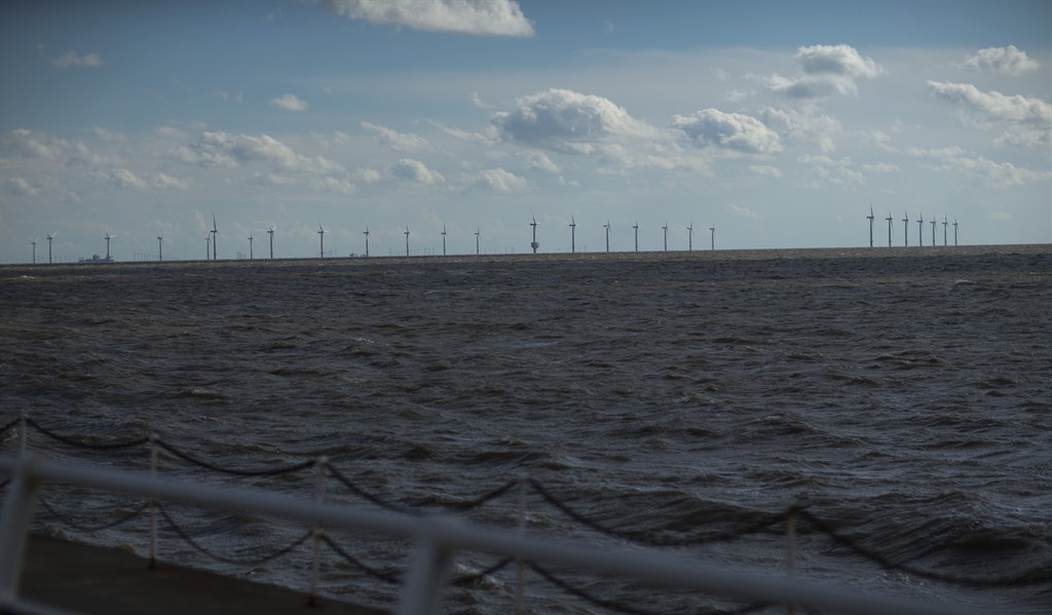Apologies to A League of Their Own and the immortal line an astonished Tom Hanks splurts out when a player erupts into tears, but it was the first thing I thought of when I read the Bloomberg headline this morning.
So many governments and so many Scientists™, so many environmentalists, so many activists and so many just plain fascist nutcases have spent so much time and effort forcing the world to bend a knee to climate cult ideological mandates cloaked in an impervious, unassailable shield of pureness of purpose, that this news should be used like a cudgel the next time any one of them pops a regulatory head up.
They sit on a crumbling throne of lies – from manipulated data to promises that were empty to begin with.
And another stretcher just got knocked out from under that fancy chair.
Big @BloombergUK investigation
Dozens of UK wind farms run by some of Europe’s largest energy companies routinely overestimated how much power they’ll produce, adding millions of pounds a year to consumers’ electricity bills
From @GavinFinchBBG and teamhttps://t.co/uwifg78y6k
— Alex Wickham (@alexwickham) February 1, 2024
This is actually extraordinary coming from Bloomberg, who are as fervent Green boosters as you will find in the MSM. It has to be egregiously, unconscionably bad to hit their site, less mind be their own people doing the exposé.
How did British wind companies over-estimating power production cost hard pressed consumers money?
Well, it’s all part of how the wind game is played, and kind of explains why everyone wants to play it (and I will warn you – probably paywalled as that’s how Bloomberg plays).
Dozens of British wind farms run by some of Europe’s largest energy companies have routinely overestimated how much power they’ll produce, adding millions of pounds a year to consumers’ electricity bills, according to market records and interviews with power traders.
These extra costs are linked to a growing problem with Britain’s outdated electricity network: On blustery days, too much wind power risks overloading the system, and the grid operator must respond by paying some firms not to generate. This “curtailment” costs consumers hundreds of millions of pounds each year.
So wind farm operators get paid not to produce, and they’re the ones who also get to estimate how much would have been produced, had they not had to put the brakes on the turbines?
Oh, sheesh. I can’t see anyone being craven enough to take advantage of that. After all, we’re saving the planet here.
Then again, I could be wrong.
…Adding to that expense, some wind farm operators exaggerate how much energy they say they intend to produce, which boosts the payments they receive for turning off, according to nine people — traders, academics and market experts — most of whom agreed to discuss this controversial behavior only on condition of anonymity.
In effect, they said, the grid has paid some wind farms not to generate power that they wouldn’t have produced anyway.
KNOCK ME OVER WITH A WIND FEATHER
I’m sure it’s only a few underhanded rapscallions indulging in this skullduggery.
Then again, I could be wrong…again.
The number’s closer to a third of the wind farms Bloomberg dug into, which does not bode well for the industry at large, eh? The overcharges for a 5 year period (2018-23) are nothing to sneer at, either. Particularly when you factor in that those are on top of already skyrocketing electric rates in large part because of transitioning to wind to begin with. It’s almost as if insult to injury was a real thing.
…Bloomberg analyzed 30 million records from 2018 through June 2023 to compare wind operators’ daily forecasts of the energy they planned to generate to their actual production when they weren’t curtailed. Out of 121 wind farms in the analysis, 40 overstated their output by 10% or more on average, and 27 of those overestimated by at least 20%.
It’s impossible to determine precisely how much bill payers have spent due to such overstatements. But assuming a similar rate of overestimation during the times that those 40 farms were paid to stop generating, consumers would have overpaid an estimated £51 million ($65 million) since 2018.
I can see why Biden’s such a big proponent – there’s easy money to be made, and the set-up is entirely government subsidized.
It didn’t take but a wink and a blink from the time the Bloomberg report came out this morning to the announcement of an investigation by UK energy regulator Ofgem into those wind farms’ accounting processes. I’m sure they felt a certain urgency, as it’s also an election year. Both the in-power Tories and wish-they-were Labour are under tremendous pressure thanks to what reaching NetZero goals have done to the country.
…“Ofgem’s wholesale markets oversight team are investigating the alleged behavior,” a spokesman said in an emailed statement, adding that the regulator had also asked National Grid Plc’s network operator to look into the matter. “We will continue to work to protect market integrity and consumers.”
Excellent work. Half of business today seems to be of the strategy of how to squeeze more $$ from the governments of the world-which in essence are the taxpayers of the world.
— Tin Man (@Tin_Man67) February 1, 2024
For graphics on just how much of a scam the wind and renewables subsidy grift is in the UK, I’d like to share these couple of charts. The ROCs referred to are a peculiar British renewable razzle-dazzle called the Renewable Obligation Certificate. It’s a government scheme – literally – to stick-and-carrot (nice way of saying “subsidize”) energy companies for producing more energy via renewable sources than traditional. It also seems shady af from the “ripe for abuse” angle.
Suppliers meet their obligations by presenting Renewable Obligation Certificates (ROCs) to Ofgem. Where suppliers do not have sufficient ROCs to cover their obligation, a payment is made into the buy-out fund. The buy-out price suppliers pay is a fixed price per MWh shortfall and is adjusted in line with the Retail Prices Index each year. The proceeds of the buy-out fund are paid back to suppliers in proportion to how many ROCs they have presented. For example, if they were to submit 5% of the total number of ROCs submitted they would receive 5% of the total funds that defaulting supply companies pay into the buy-out fund.
ROCs are intended to create a market, and be traded at market prices that differ from the official buy-out price. If there is an excess of renewable production, beyond the supplier obligation, the price of ROCs would fall below the buy-out price. The price of ROCs could approach zero if renewable and non-renewable generation costs became similar, when there would be little or no subsidy of renewable generation. If there is less renewable production than the obligation, the price of ROCs would increase above the buy-out price, as purchasers anticipate later payments from the buy-out fund on each ROC.[4]
Obligation periods run for one year, beginning on 1 April and running to 31 March. Supply companies have until the 31 August following the period to submit sufficient ROCs to cover their obligation, or to submit sufficient payment to the buy-out fund to cover the shortfall.
The cost of ROCs is effectively paid by electricity consumers of supply companies that fail to present sufficient ROCs, whilst reducing the cost to consumers of supply companies who submit large numbers of ROCs, assuming that all costs and savings are passed on to consumers.
But, see, the other problem on the back end – all those savings, etc. are not “passed on to consumers.” They normally never make it past renewables companies’ coffers. CHA-CHING
Offshore and onshore wind are the biggest recipients of ROC subsidy largesse. followed closely by "fuelled" biomass, mostly burning trees. (4/n) pic.twitter.com/Mmb5Jr126w
— David Turver (@7Kiwi) January 28, 2024
Generators are getting “more than HALF THEIR REVENUES from subsidies“…while eating the UK rate and tax payer alive. “Cheap” renewables was always a lie.
The Top-10 generators are dominated by the tree-burners at Drax that received £550m worth of RO certificates in FY22/23. The other nine of the Top-10 were offshore wind farms receiving £100-220m each. (6/n) pic.twitter.com/BLhiptk26q
— David Turver (@7Kiwi) January 28, 2024
You bet Ofgem’s jumping on “investigating” – their very political lives and this abominable Green grifting scheme depends on it.
Keep an eye on this, America. When you’ve got slimy operators like Gov Phil Murphy selling the sea and your souls out from underneath you…
Offshore wind projects set to cost $1 BILLION a year for New Jersey residents
New Jersey officials have approved two giant offshore wind projects slated for energy production by 2032 – but the plans could cost residents $1 billion each year.
The state’s Board of Public Utilities (BPU) sold the plots to Leading Light Wind and Attentive Energy Two, which are set to produce around 3,740 megawatts of electricity combined over the 20-year life of the contracts.
Mike Dean, a Monmouth County resident, told DailyMail.com that they are the most expensive contracts signed by the BPU.
The contractors will be paid up to $131 per megawatt in the first year, compared to the previous bids that started at $80 and went up to $100, Dean explained.
…without so much as a “by your leave” but with plenty of those cheap promises.







Join the conversation as a VIP Member